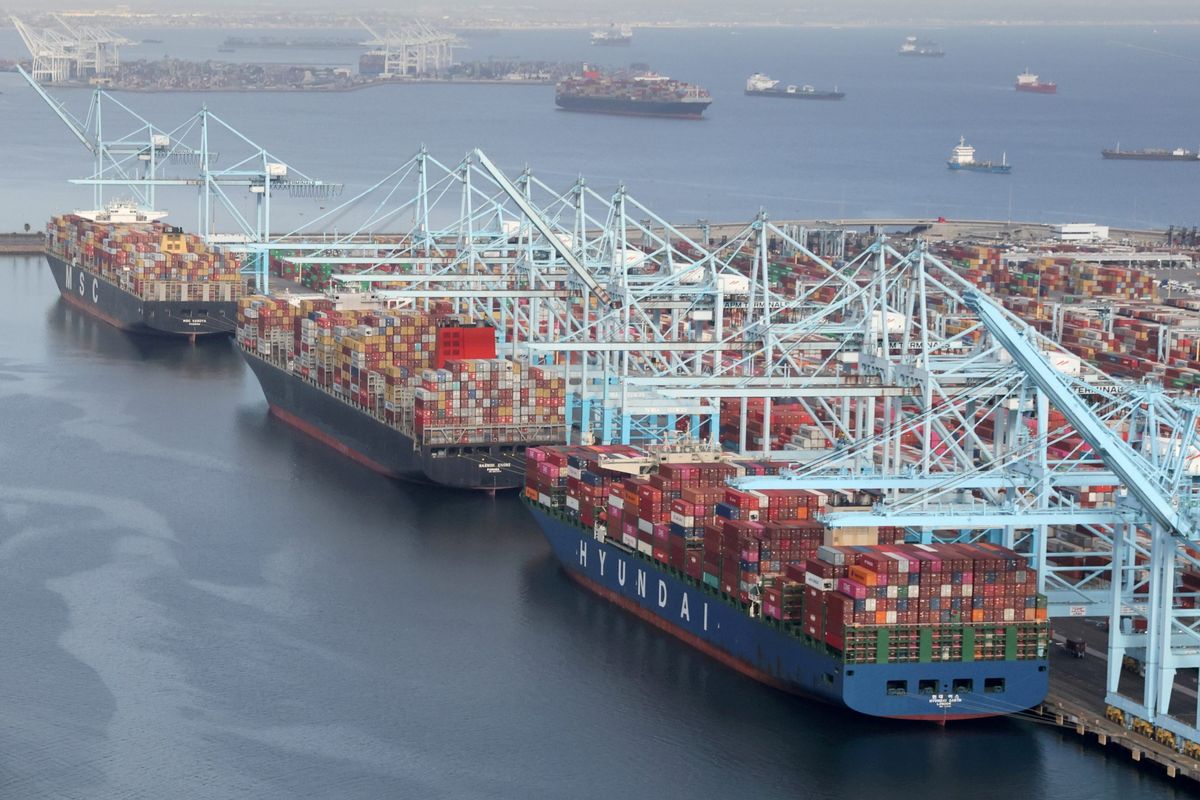What’s the Biden administration doing to fix the supply chain issues?

A few minutes every morning is all you need.
Stay up to date on the world's Headlines and Human Stories. It's fun, it's factual, it's fluff-free.
Trade credit insurer Euler Hermes recently posted a report saying that the global supply chain issues would persist throughout the holidays and Lunar New Year. But, things may start looking up from there.
What’s going on with the global supply chain?
- The global supply chain refers to the people, roles and activities involved in producing goods and services and their supply and distribution across the entire world.
- Think of all the components of a computer, for example. Many of these components require silicon to make them. In 2020, 5.4 million metric tons of silicon were produced in China, which represents around two-thirds of the world’s total supply.
- Since computer assemblers in the United States need silicon to make computers, if they can’t get silicon, they can’t make computers.
- Several things have contributed to this disruption on both the supply and the demand side of the economy.
Like what?
- While there are several contributing factors to this spike in the prices of our goods, there’s still one big event we can point to as the cause of all of this: the pandemic.
- Scott Pederson, the founder of Harmony Wealth Management LLC, explained that companies cut down services and goods when the pandemic started, thinking that there would be less demand.
- But, the “unprecedented fiscal and monetary policy support of government and central banks around the world provided liquidity into the economic system to keep consumers afloat, especially in the US.”
- With the services industry closed, such as restaurants, consumers bought goods instead.
- But right now, it’s been difficult to get the goods made as well as sent to shops and warehouses.
- For example, Vietnam, which has become an apparel manufacturing hub over the last few years, is dealing with a worker shortage after many workers left for their hometowns to recover from the emotional toll brought on by being in the city during the height of the COVID-19 outbreaks. This means that these manufacturing firms have less staff and, therefore, limited production.
- Within the US, though, there’s also a worker shortage. This means that there are fewer people, for example, to unload ships at cargo ports and fewer truck drivers to take that cargo where it needs to go.
What’s going on with shipping?
- The problem isn’t just the shortages of products but the means to ship them, such as shipping containers.
- “Port congestion and a shortage of container shipping capacity may last into the fourth quarter or even mid-2022,” said Hsieh Huey-chuan, president of Taiwan-based Evergreen Marine Corp. “If the pandemic cannot be effectively contained, port congestion may become a new normal.”
- This has been a massive problem in the US, with many ports congested with hundreds of ships waiting in line.
- To tackle this, last month, the Biden administration announced a plan to “lay the foundation” for the massive infrastructure bill that was passed by implementing “new construction projects for coastal navigation, inland waterways, and land ports of entry.”
When should this normalize?
- Trade credit insurer Euler Hermes recently posted a report saying that the global supply chain issues would persist throughout the holidays and Lunar New Year. But, things may start looking up from there.
- According to Hermes, there are three key reasons why the global supply chain should ease up in 2022.
- Firstly, demand will normalize gradually, with the report calling it “self-regulated normalization.”
- Secondly, the report pointed out that inventories are looking pretty good compared to pre-COVID-19 levels.
- “The good news is that the urgency to restock has clearly peaked over the past months … and the level of inventories is already above pre-crisis long-term averages among most sectors.”
- Finally, Euler Hermes pointed out that considering the US is investing US$17 billion into the shipping industry, the shipping congestion should ease up.
What’s next?
- The Biden administration is reportedly looking to also sign a “very powerful” economic framework agreement with Asian nations, aiming to increase coordination of supply chains next year.
- “It’s a priority for the president,” Commerce Secretary Gina Raimondo said of deepening US engagement with Asia. “America didn’t show up in that region for four years,” she said, alluding to the previous Trump administration.
- What the Biden administration envisions is a “new kind of economic framework for a new economy,” and the hope is to “early in the new year, the first quarter of next year, officially launch a process,” Raimondo explained.
- So, while there’s a general consensus that the supply chain will normalize with government investment and natural economic forces all contributing to the recovery, the question is – at what point next year will things ease?
You drive the stories at TMS. DM us which headline you want us to explain, or email us.




Comments ()